In the world of nature, every plant and tree holds life. On the expansive 3.1-million-square-meter campus of NPU, beyond the signature “NPU Blue,” lies the captivating “NPU Green” that enhances its beauty.
With a diverse array of plant species complementing its architectural landscape, the campus presents breathtaking views throughout the seasons, embodying the perfect harmony between nature and human culture.
By the shores of the Qizhen Lake, Prunus biryani ‘Meiren’ bloom in profusion, while Yulania denudate and Cercis glabra Pamp on either side of the East Teaching Building creates a dazzling tapestry of spring blossoms.
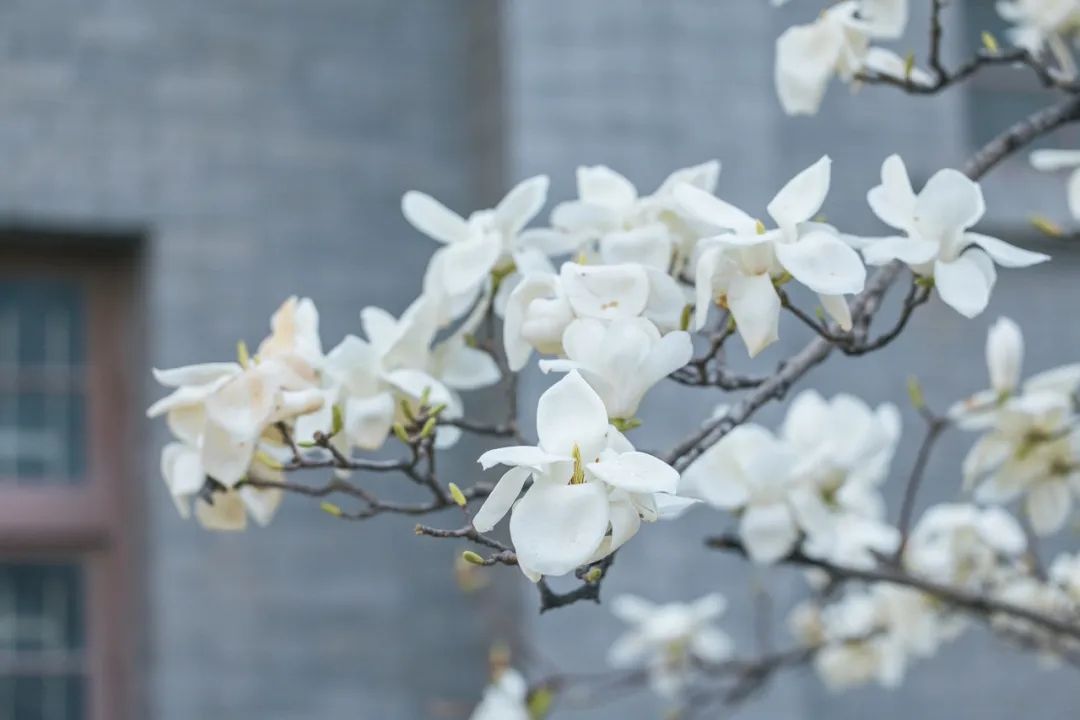
Scorching Summer
Platanus acerifolia in the Youyi Campus form a dense canopy, and Aesculus chinensis in the Chang’an Campus offers refreshing shade, bringing a touch of coolness to the sweltering summer.
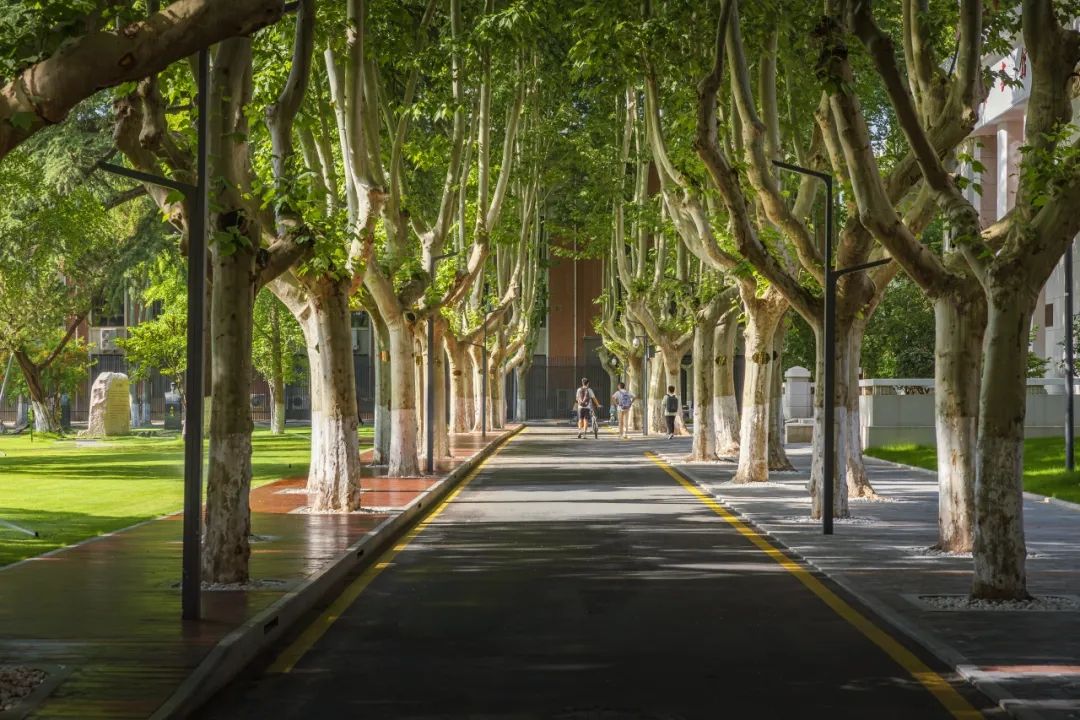
Vibrant Autumn
At Hezun Square, Acer rubrum blazes like fire, while Ginkgo biloba leaves carpet on the ground beside the Qizhen Building, painting a vivid autumn scene.
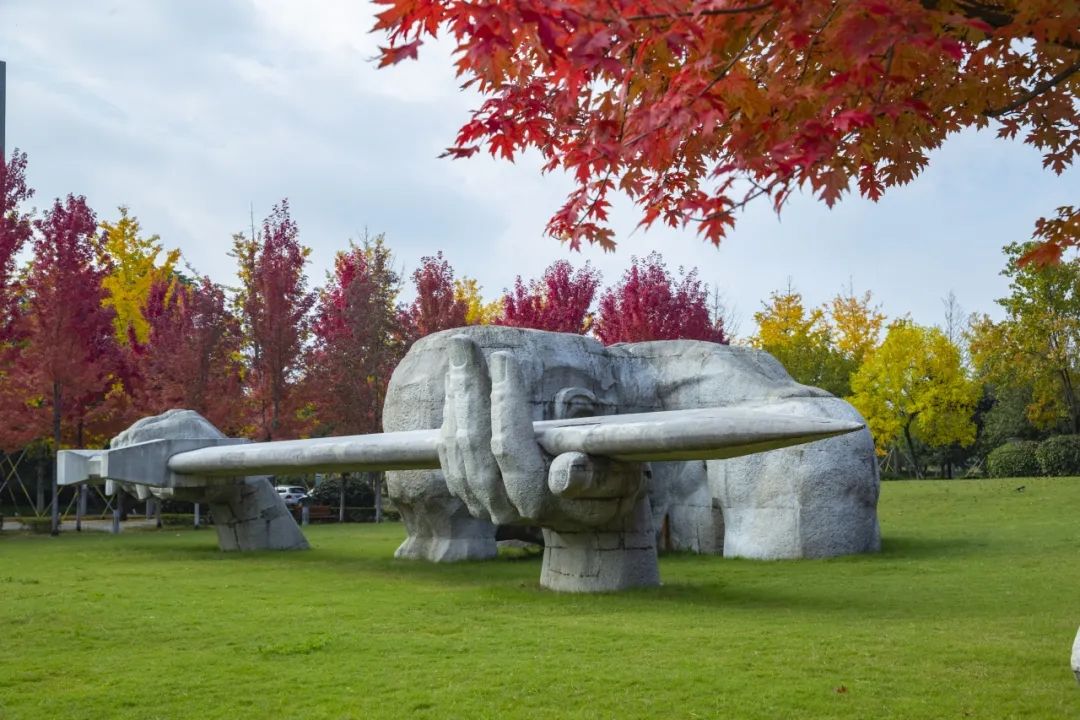
Harsh Winter
Nandina domestica Thunb glows crimson, and Chimonanthus praecox Link blossoms brave the cold, showcasing the resilience and tenacity of life in a truly awe-inspiring display.
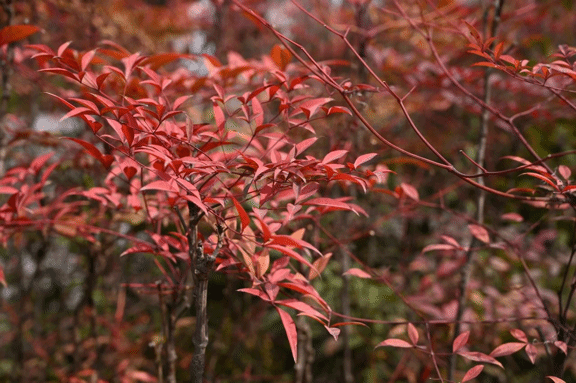
Campus Flora of NPU: Woody Plants
In August 2024, after four years of dedicated effort, the School of Ecology and Environment, the University Press, and the Publicity Department of NPU collaboratively published Campus Flora of NPU: Woody Plants.
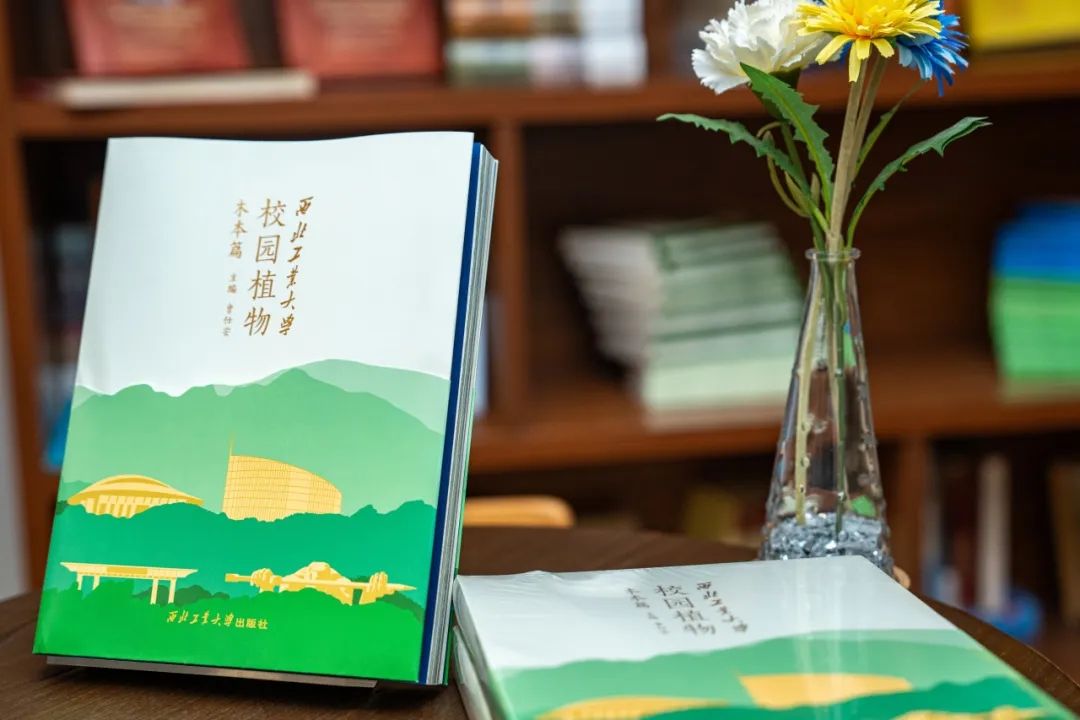
The book documents 184 species (including subspecies) of woody plants commonly found on the NPU campus, spanning 53 families and 101 genera. It is divided into two sections. The first section, drawing on references such as Flora of China, describes the key biological characteristics of each plant and its family, accompanied by photographs and an appreciation guide to facilitate on-site exploration for students and faculty. The second section features 46 representative species, presented in plant notes that intertwine botanical knowledge with poetry, practical uses, and cultural insights, enhancing the book’s readability and appeal.
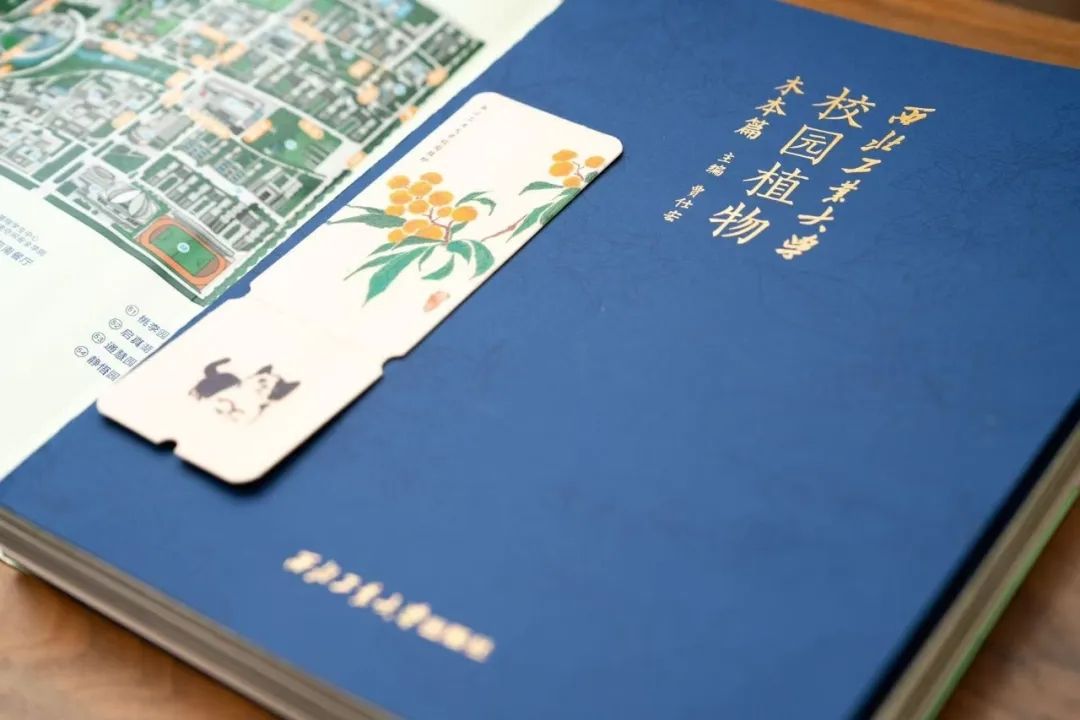
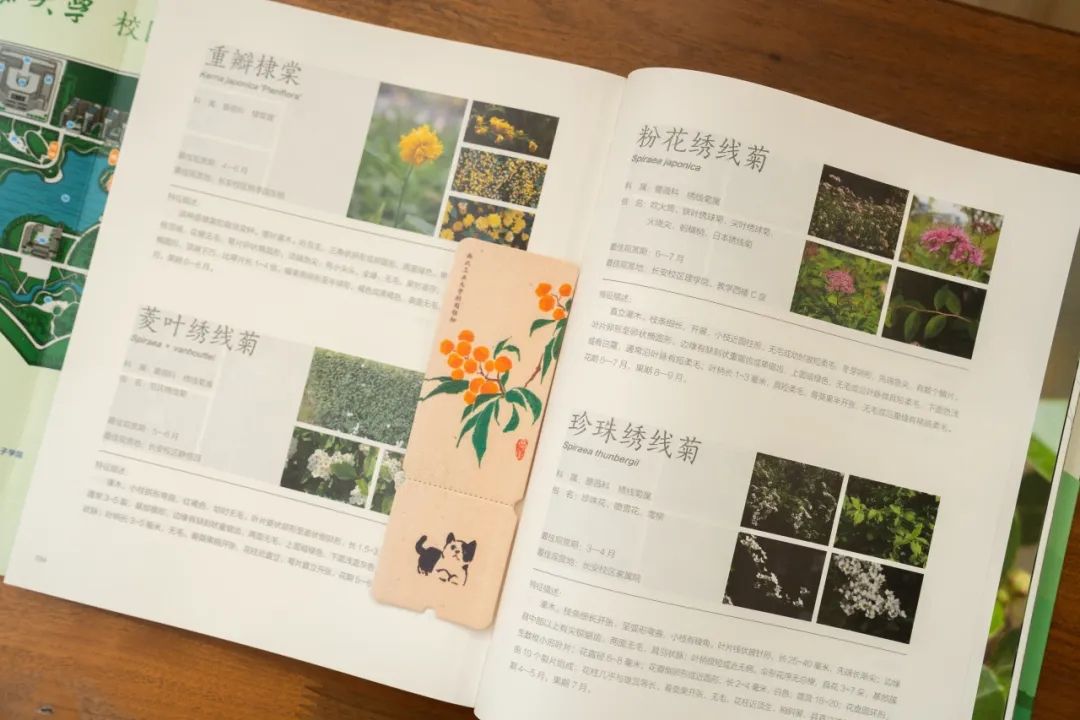
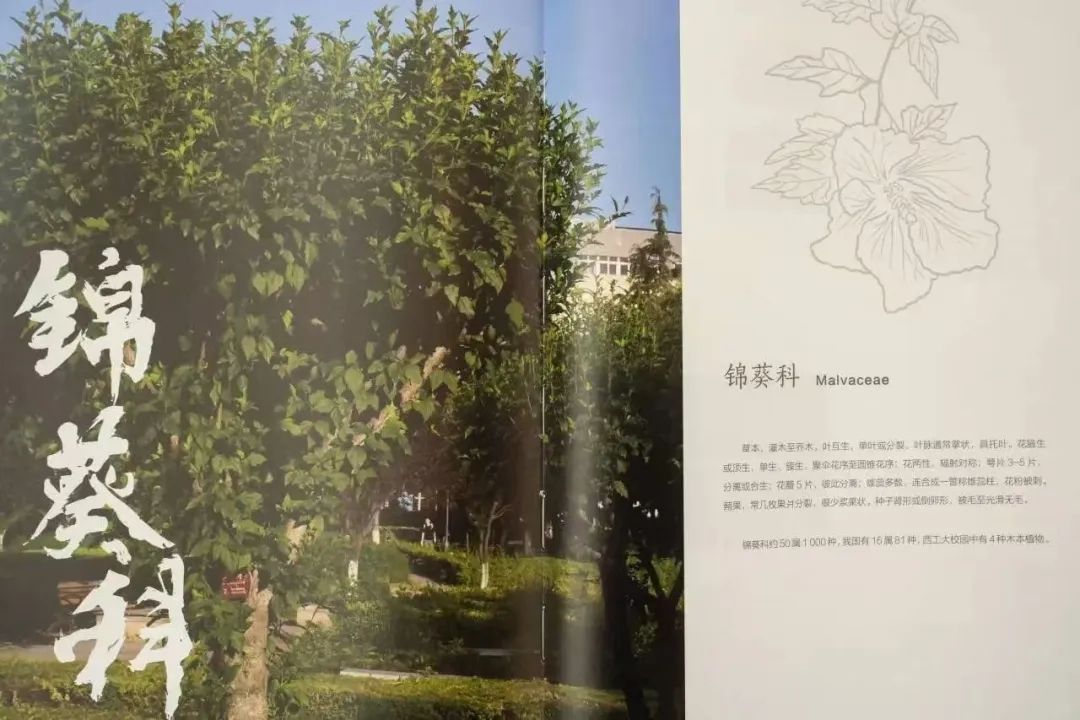
Campus Flora of NPU: Woody Plants is a significant achievement in implementing China’s ecological civilization strategy and putting Xi Jinping’s ecological civilization thought into practice. More than just a guide to campus flora, it is a tribute to the beauty of nature and a testament to NPU’s commitment to promoting ecological awareness and sustainability.
Let’s follow the Campus Plant Appreciation Map provided in the book and embark on a journey to explore the diverse plant life spread across the university!

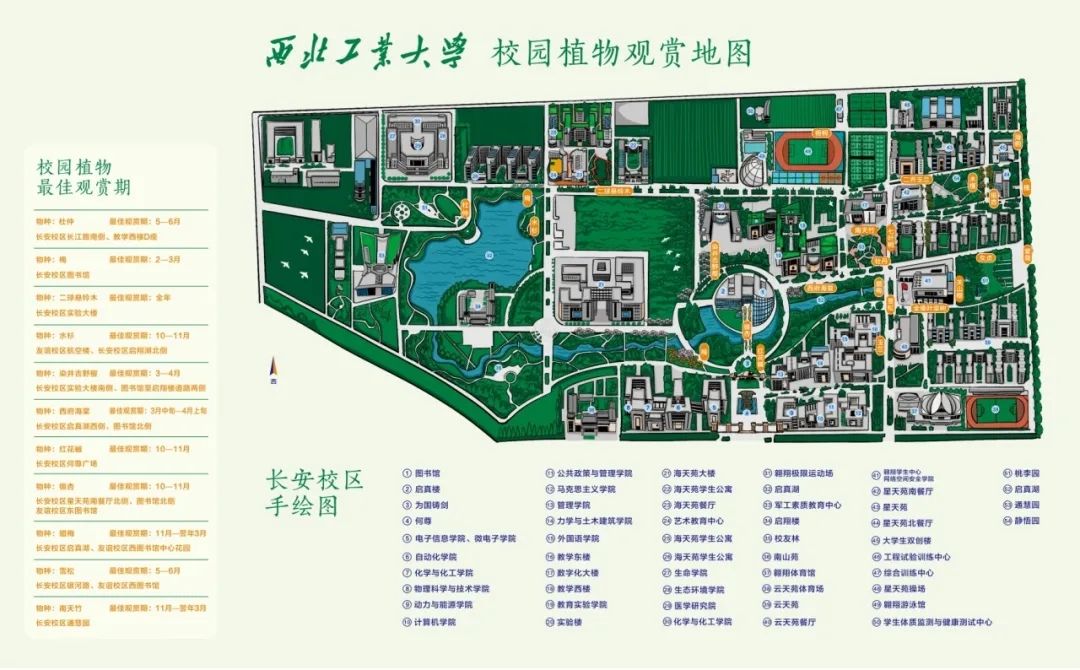
Platanus × acerifolia
Family & Genus: Platanaceae, Platanus
Common Name: London Plane
Best Viewing Season: Year-round
Best Viewing Locations: Sanhang Road, Youyi Campus; West side of Aoxiang Gymnasium, Chang’an Campus
Description:
This species is a hybrid of Platanus orientalis and Platanus occidentalis. It is a large deciduous tree with smooth bark that peels off in large, patchy flakes. Young branches are densely covered in greyish-yellow fuzz, while mature branches are smooth and reddish-brown. The leaves are broadly ovate, with a truncate or slightly cordate base and palmately divided into five lobes, occasionally seven or three. The central lobe is broadly triangular, with equal width and length. The lobes may have entire margins or 1–2 coarse serrations. The venation is typically palmate with three main veins, rarely five. The petiole is 3–10 cm long, densely covered with yellow-brown hairs. The flowers are usually tetramerous (in fours). The fruiting branches bear one or two, rarely three, globular infructescences, which typically hang downward. Each fruiting head has a diameter of approximately 2.5 cm, with persistent, spiny styles measuring 2–3 mm long. The achenes have no prominent hairs or are covered with very short hairs.
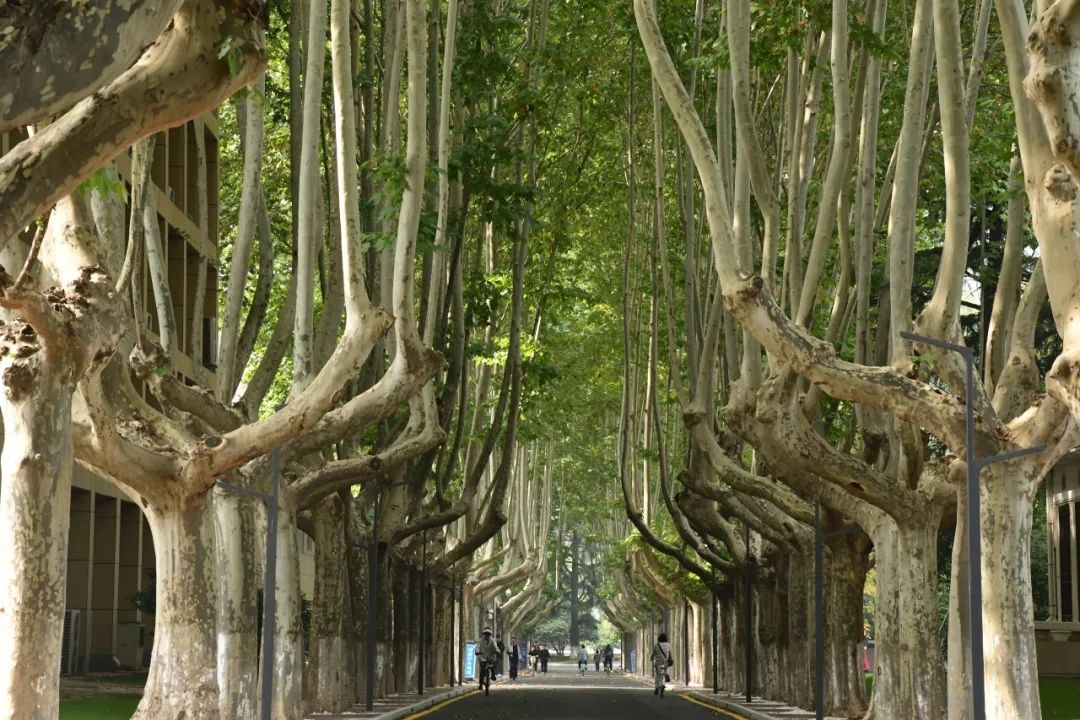
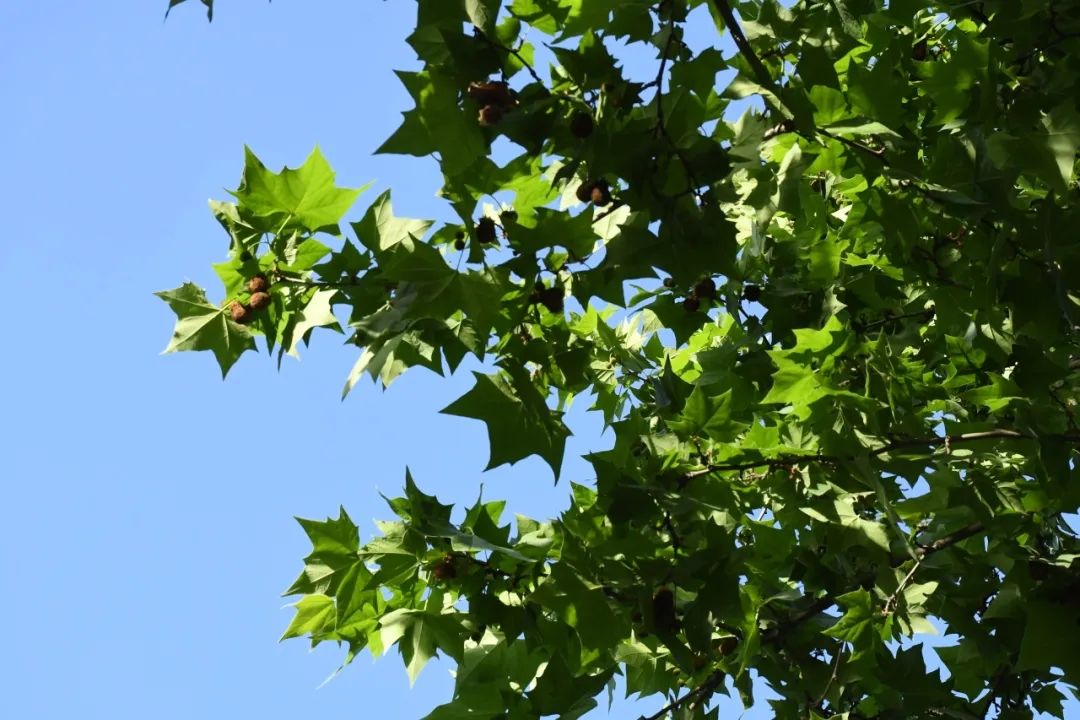
Aesculus chinensis
Family & Genus: Sapindaceae, Aesculus
Common Name: Zhejiang Horse Chestnut, Japanese Horse Chestnut
Best Viewing Period: April–May, October
Best Viewing Location: Both sides of Chang’an Road, Chang’an Campus
Description:
Deciduous tree. Palmately compound leaves, consisting of 5–7 leaflets. The petiole is 10–12 cm long. The leaflets are papery, lanceolate to oblong-lanceolate, 8–16 cm long, with finely serrated edges. The inflorescence is cylindrical, with the small inflorescences typically consisting of 5–10 flowers. The flowers are polygamous, with male and bisexual flowers on the same tree. The flowers have 4 white petals and 6 stamens with pale yellow anthers. The fruit is spherical or obovoid, yellow-brown, with dense spots. The seed is nearly spherical, chestnut-brown.
Flowering Period: April–May
Fruiting Period: October


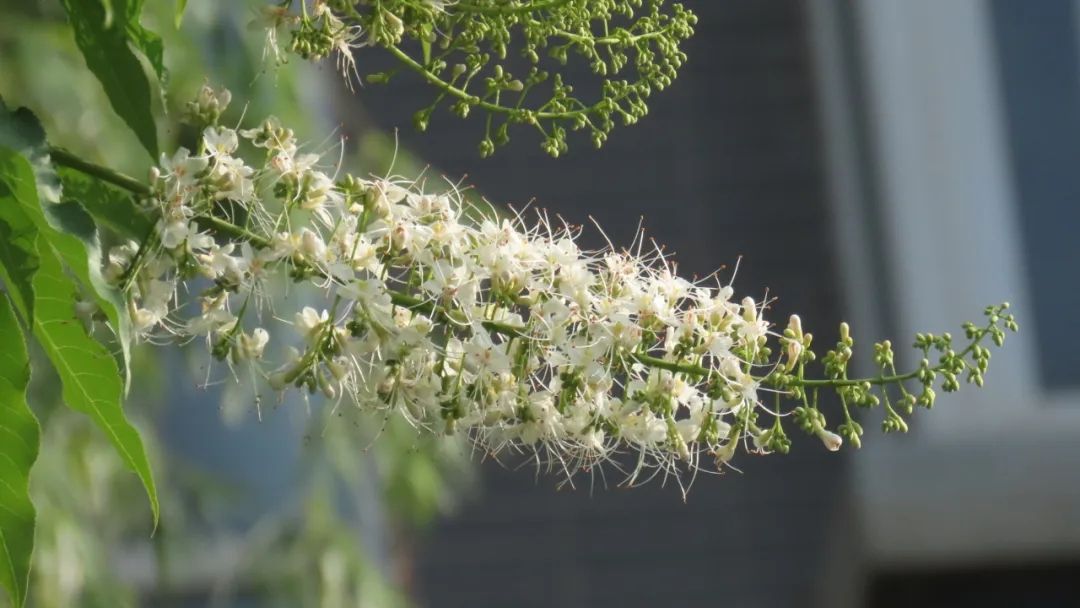
Koelreuteria bipinnata var. integrifoliola
Family & Genus: Sapindaceae, Koelreuteria
Common Names: Tuzala, Balazi, Mountain Bladder, Huangshan Golden Rain Tree
Best Viewing Period: Late September to early November
Best Viewing Location: Both sides of Taishan Road, Chang’an Campus; University Press, Youyi Campus
Description:
This variety is a subspecies of the pinnately compound-leaved golden rain tree. It is a deciduous tree or shrub. The bark is thick, grey-brown to dark grey, and becomes longitudinally cracked with age. The leaves are once-pinnately compound, incomplete bipinnate, or occasionally bipinnate, with no petiole or a very short petiole. The leaves are opposite or alternate, papery, ovate, broad-ovate, or lanceolate in shape. The inflorescence is a corymb-like panicle, with pale yellow flowers that are slightly fragrant. Each flower has 4 petals, which bend outward when blooming and are linear-lanceolate in shape. The fruit is conical, with a gradually tapering apex, and has a net-like texture on the outside. The seed is nearly spherical.
Flowering Period: June–August
Fruiting Period: September–October
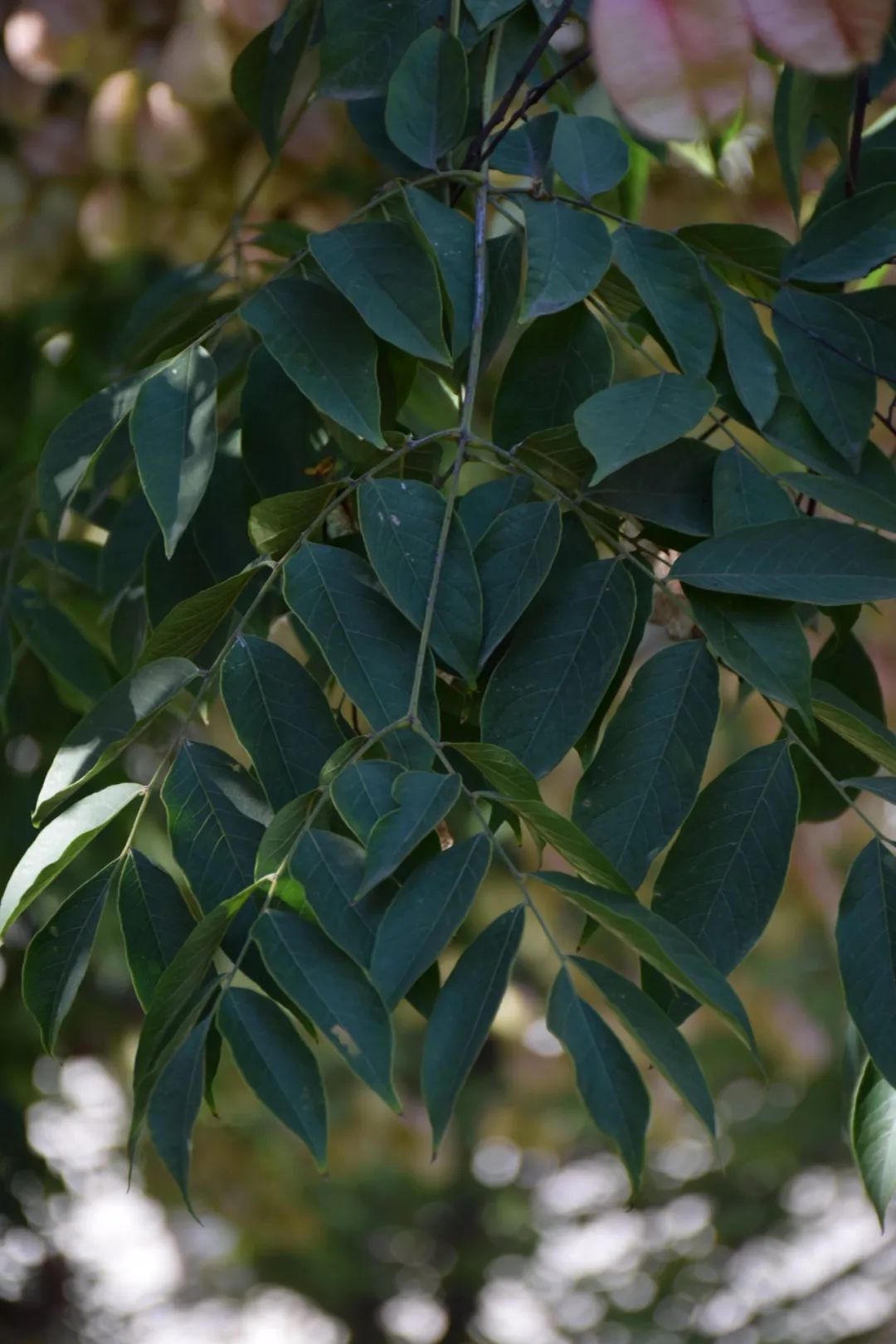
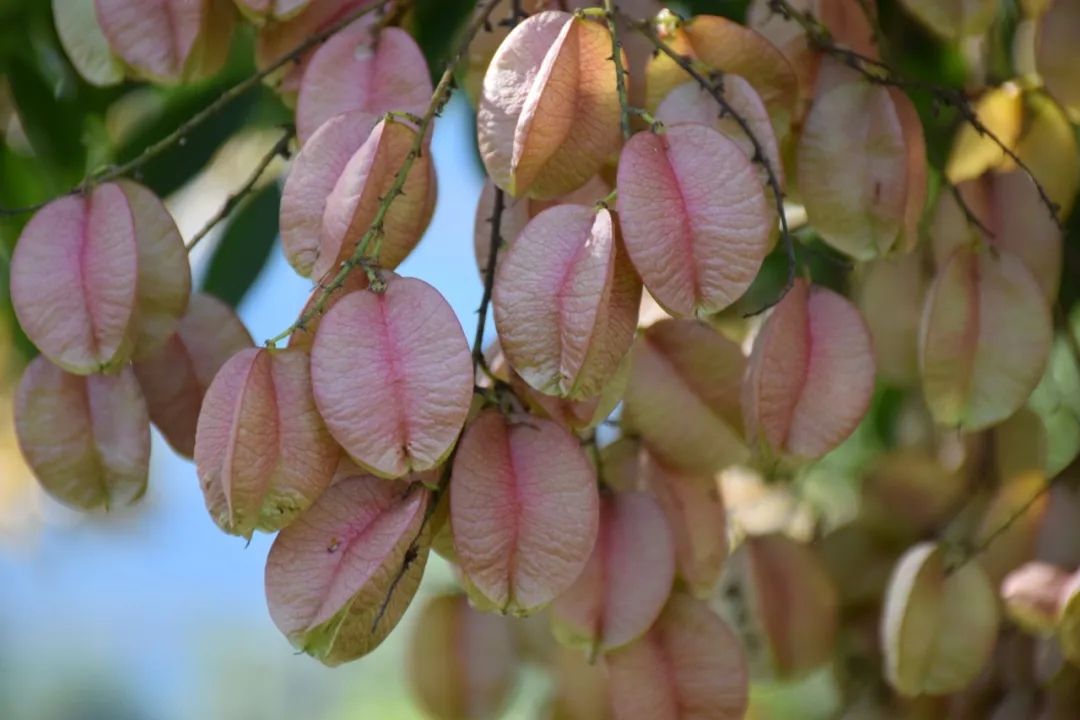
Cercis glabra
Family & Genus: Fabaceae, Cercis
Common Names: Yunnan Redbud, Wusang Tree, Basket Tree
Best Viewing Period: March – April
Best Viewing Location: Yinhe Road, Chang’an Campus
Description:
Deciduous tree. The bark and young branches are grey-black. The leaves are relatively large, papery to nearly leathery, heart-shaped or triangular-rounded, 5–12 cm long, with blunt or acute tips. The young leaves are often purplish-red, turning green as they mature. The upper surface is glossy, while the lower surface is either hairless or with tufts of soft hairs in the axils of the basal veins. The petiole is 2–4.5 cm long. The inflorescence is a short raceme, with several to a dozen flowers. The flowers are pale purplish-red or pink, blooming before or simultaneously with the leaves. The fruit is narrowly oblong, purple-red, 9–14 cm long. The seeds are 1–8 in number, nearly round, 6–7 mm long.
Flowering Period: March – April
Fruiting Period: September – November
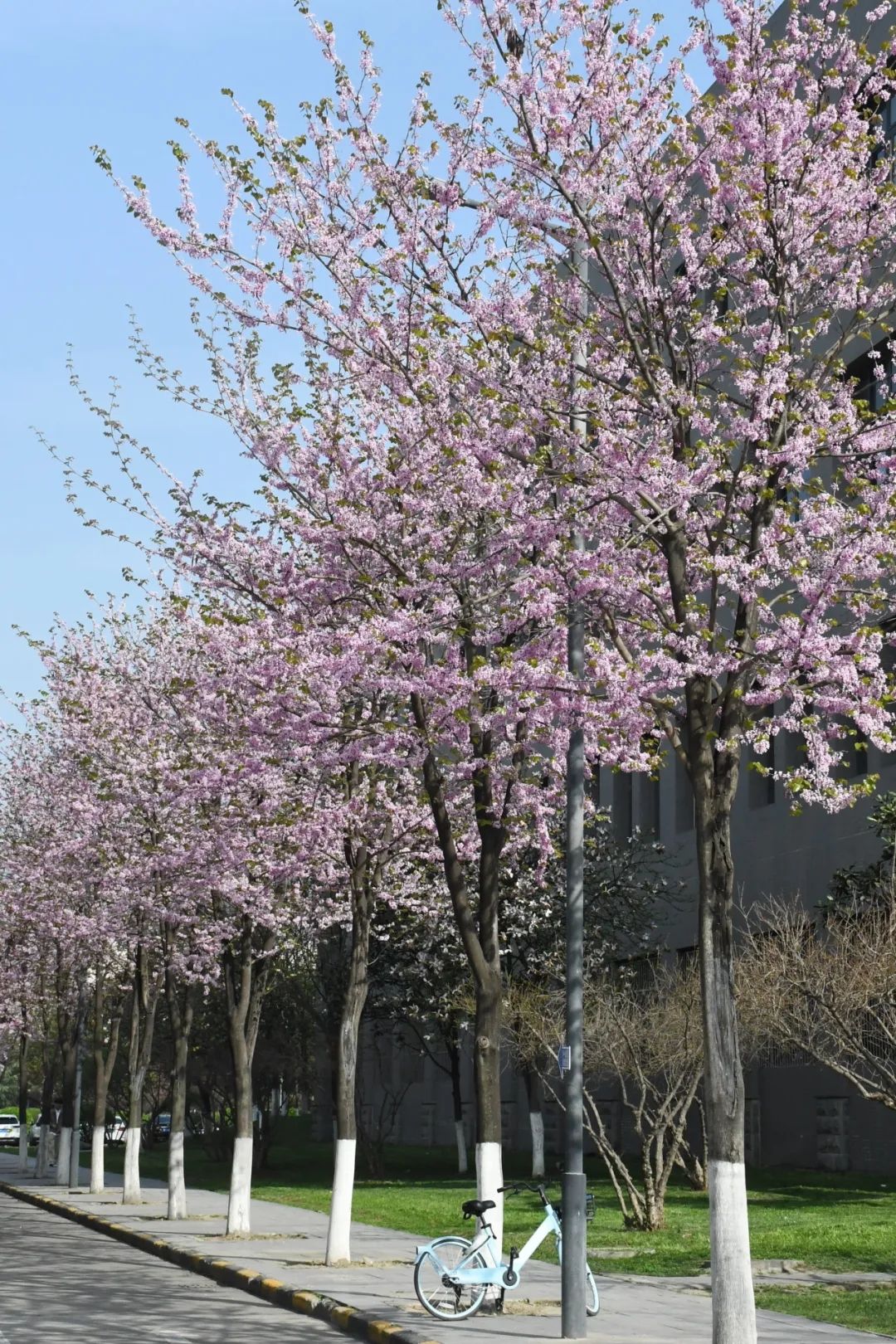
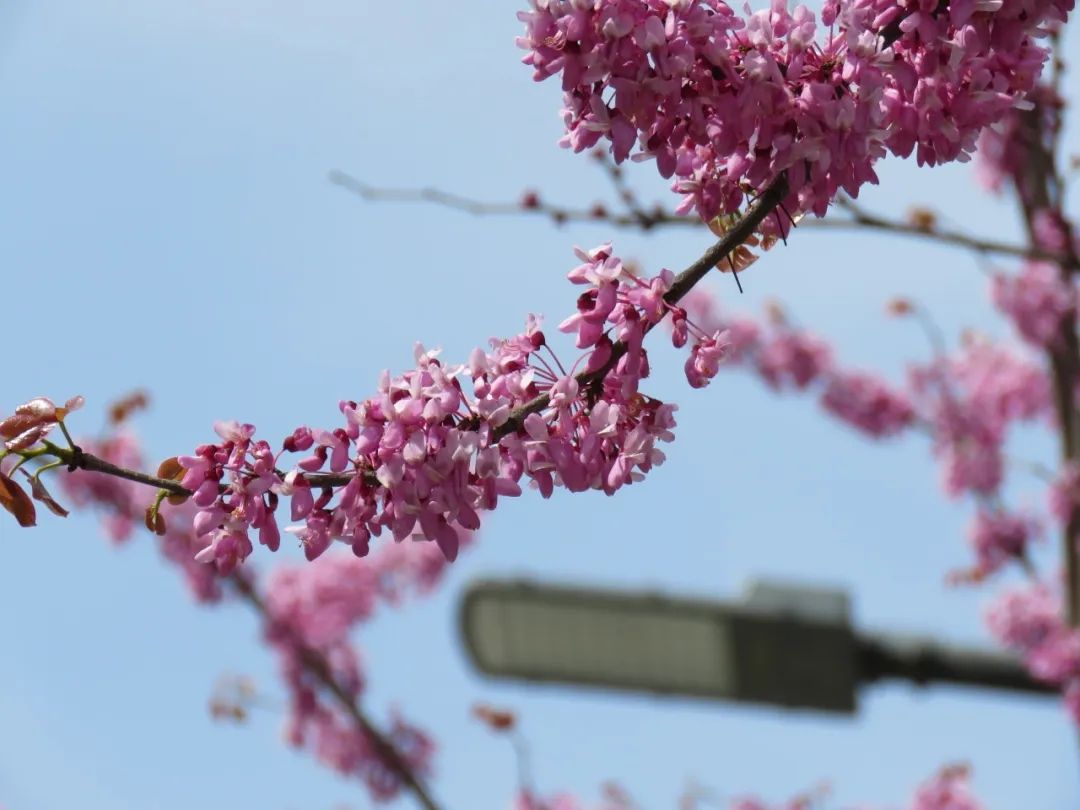
Yulania denudate
Family & Genus: Magnoliaceae, Yulania
Common Names: Yingchun Flower, White Yulan Magnolia, Yutangchun, Magnolia
Best Viewing Period: March
Best Viewing Locations: East Teaching Building, Chang’an Campus; South Restaurant, Xingtianyuan; East Library, Youyi Campus
Description:
Deciduous tree. The bark is dark grey, rough, and cracked. The leaves are papery, and elliptical, with 8–10 lateral veins on each side. The petiole is 1–2.5 cm long and covered with soft hairs. The flowers bloom before the leaves, are erect, and are fragrant. The pedicel is significantly swollen and densely covered with pale yellow long silky hairs. The tepals number 9, are white, with the base often pinkish, and are lanceolate to obovate. The stamens are 7–12 mm long, and the pistils are light green and hairless. The aggregate fruit is cylindrical. The follicles are thick and woody, brown with white lenticels. The seeds are heart-shaped, with the outer seed coat being red and the inner seed coat being black.
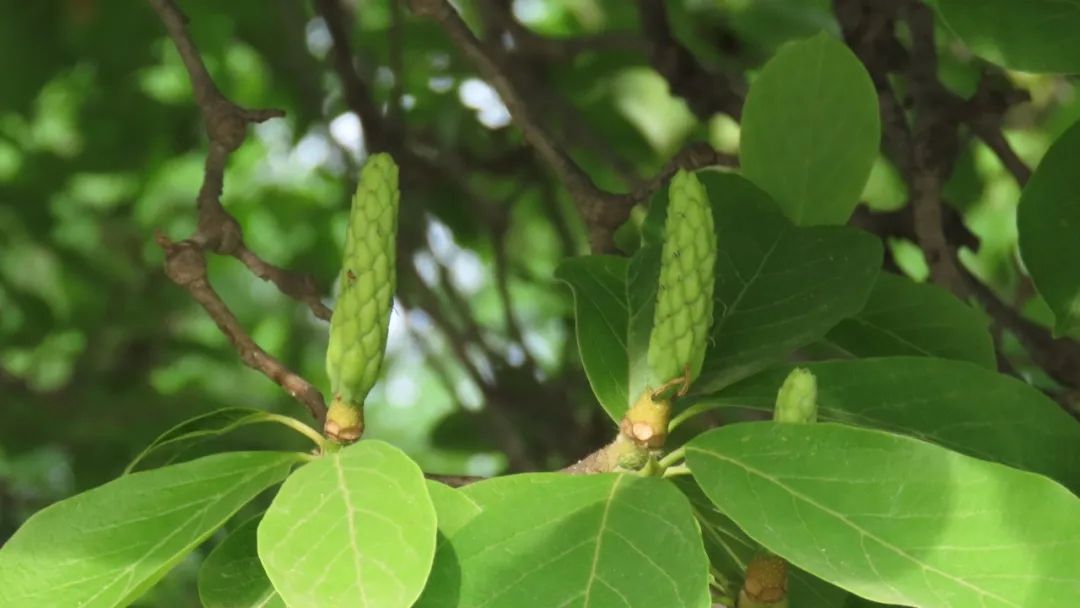
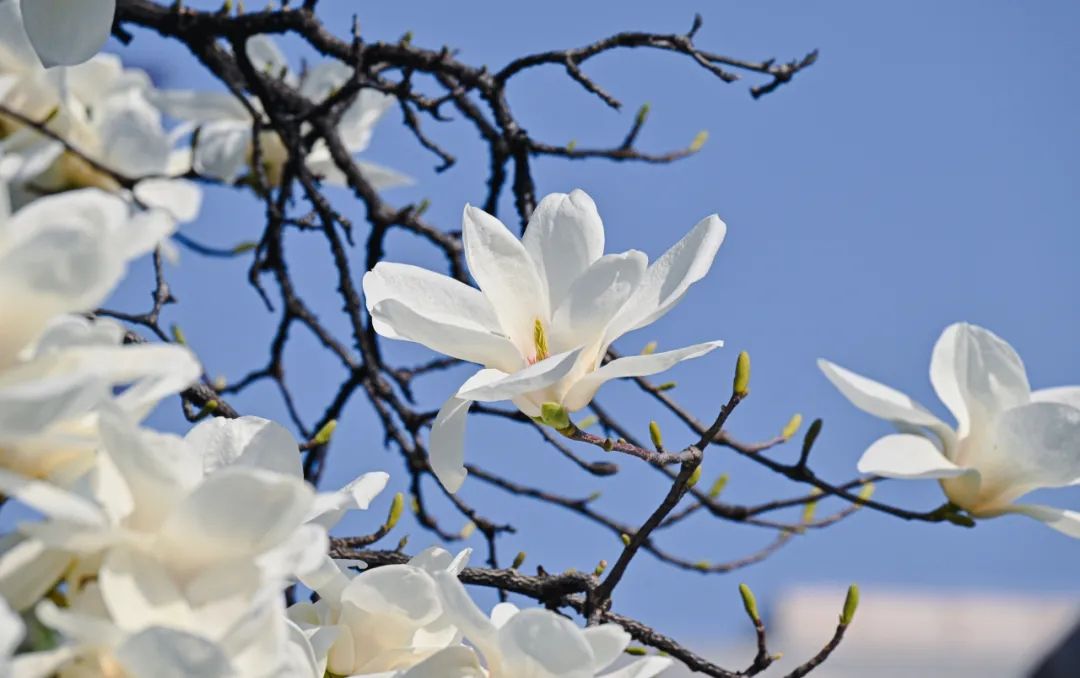
Ginkgo biloba
Family & Genus: Ginkgoaceae, Ginkgo
Common Names: Duck’s Foot Tree, Ginkgo, Maidenhair Tree, White Fruit
Best Viewing Period: October–November
Best Viewing Locations: North side of the South Restaurant, Xingtianyuan, Chang’an Campus; North side of the Library, Chang’an Campus; East Library, Youyi Campus
Description:
Tree. The leaves are fan-shaped, with long petioles, light green, and have numerous forked parallel veins. The petiole is 3–10 cm long. The leaves are spirally arranged on the one-year-old branches and clustered in groups of 3–8 on the short branches. Before falling in autumn, the leaves turn yellow. The flowers are unisexual and occur on separate trees. They are found in clusters in the axils of the leaves at the tips of the short branches. The male flowers are in catkin-like inflorescences and hang down; the female flowers have long pedicels. The seeds have long pedicels, hang down, are usually oval-shaped, and turn yellow or orange-yellow when ripe. The seeds are coated with a white powder and have a foul odor.
Flowering Period: March – April
Seed Maturation: September – October

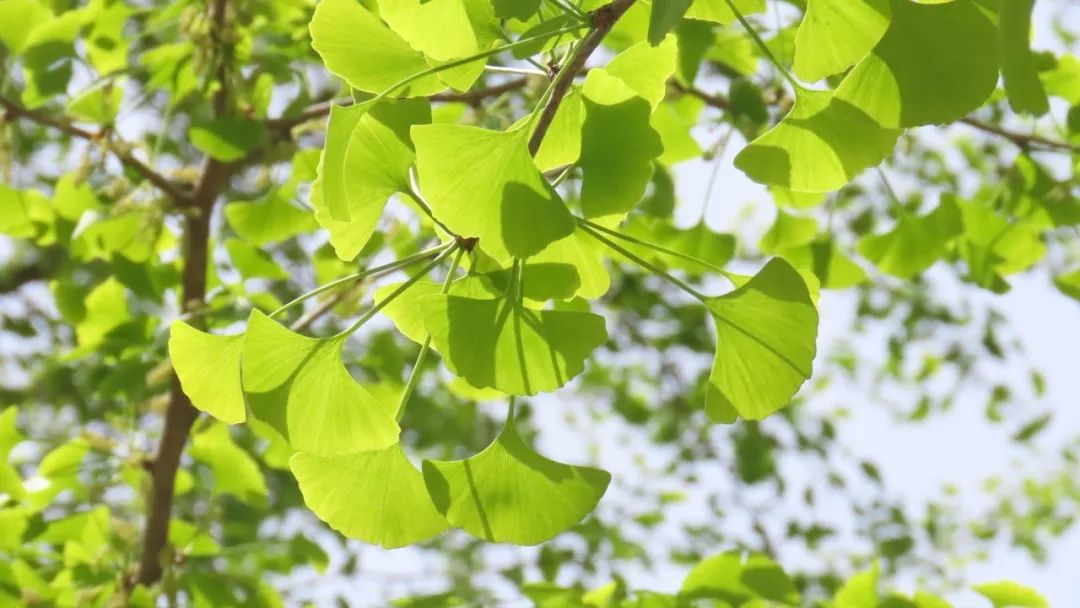
Acer rubrum
Family & Genus: Sapindaceae, Acer
Common Name: American Red Maple
Best Viewing Period: October–November
Best Viewing Location: He Zun Square, Chang’an Campus
Description:
Tree. The trunk is smooth and hairless, with lenticels. The tree shape is oval or round.
The leaves are palmately lobed, with the underside being grey-green. The flowers are clustered, red or pale yellow, small and dense, blooming before the leaves. The fruit is a winged samara, red.
Flowering Period: March
Fruit Maturation: September – October
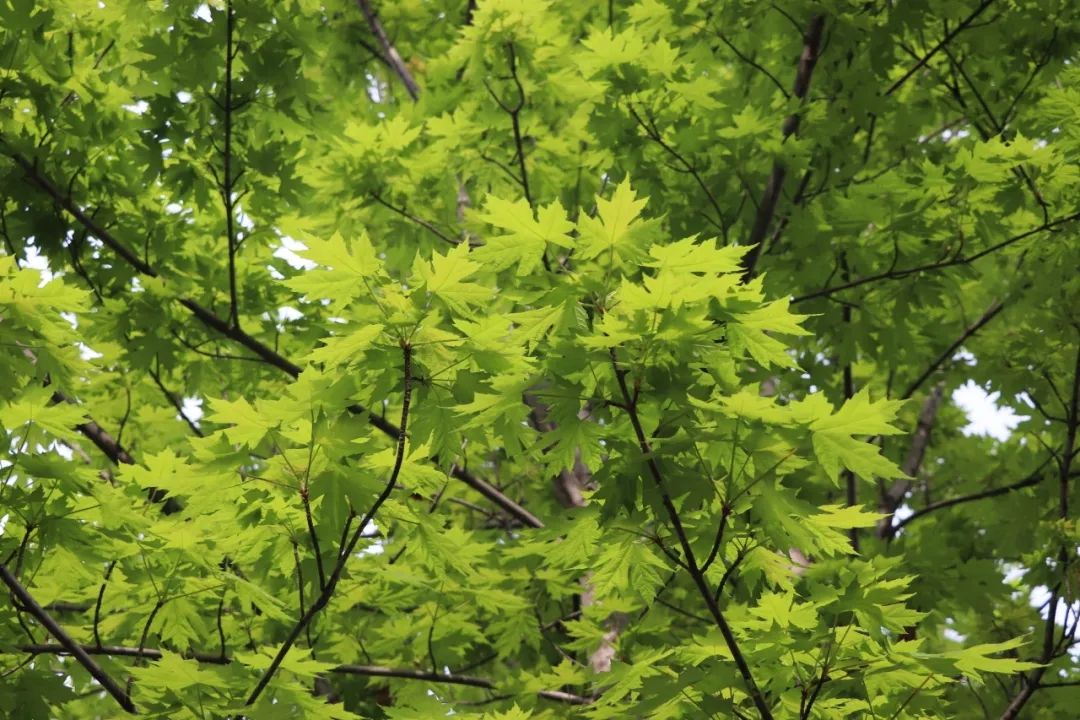
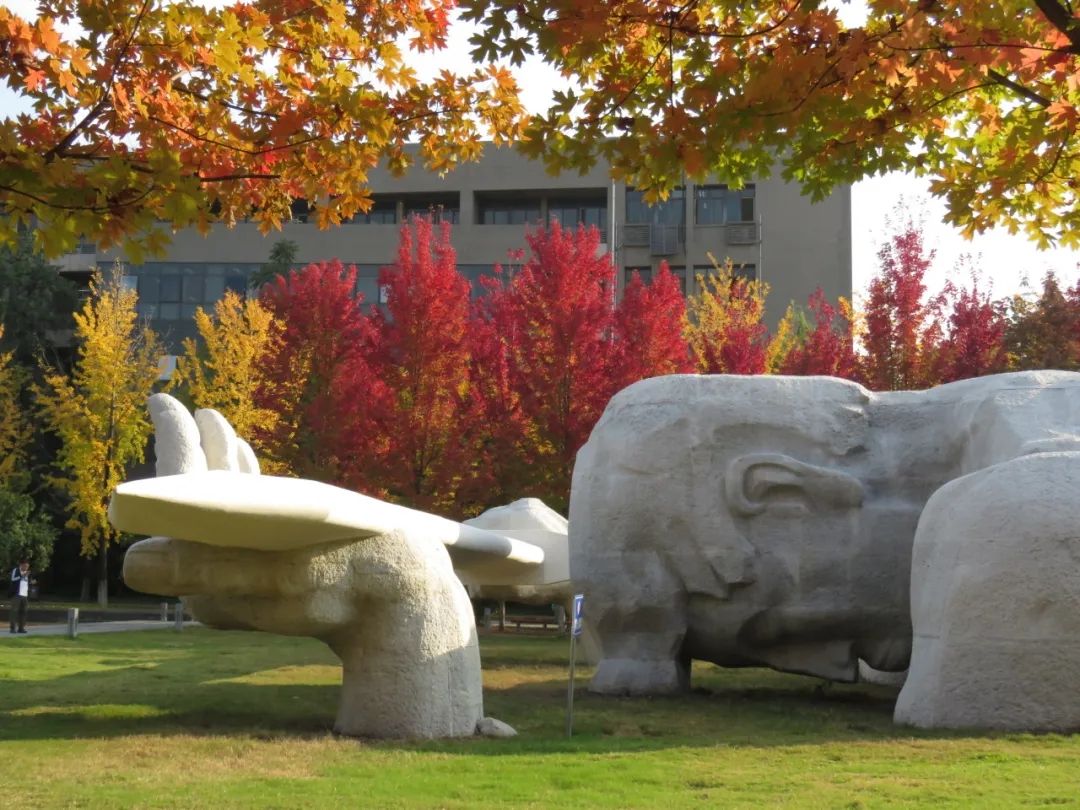
Prunus serrulata ‘Sekiyama’
Family & Genus: Rosaceae, Prunus
Best Viewing Period: March-May
Best Viewing Location: East side of the Digital Building, Chang’an Campus
Description:
This variety is a cultivated form of the mountain cherry. A small tree with many branches, the young branches are numerous and bend upwards. The flowers and leaves bloom simultaneously. The flowers are deep red, with approximately 30 petals. Two pistils are transformed into petal-like structures and are infertile. The pedicels are thick and long, and the young leaves are tea-brown.
Flowering Period: Late March – April

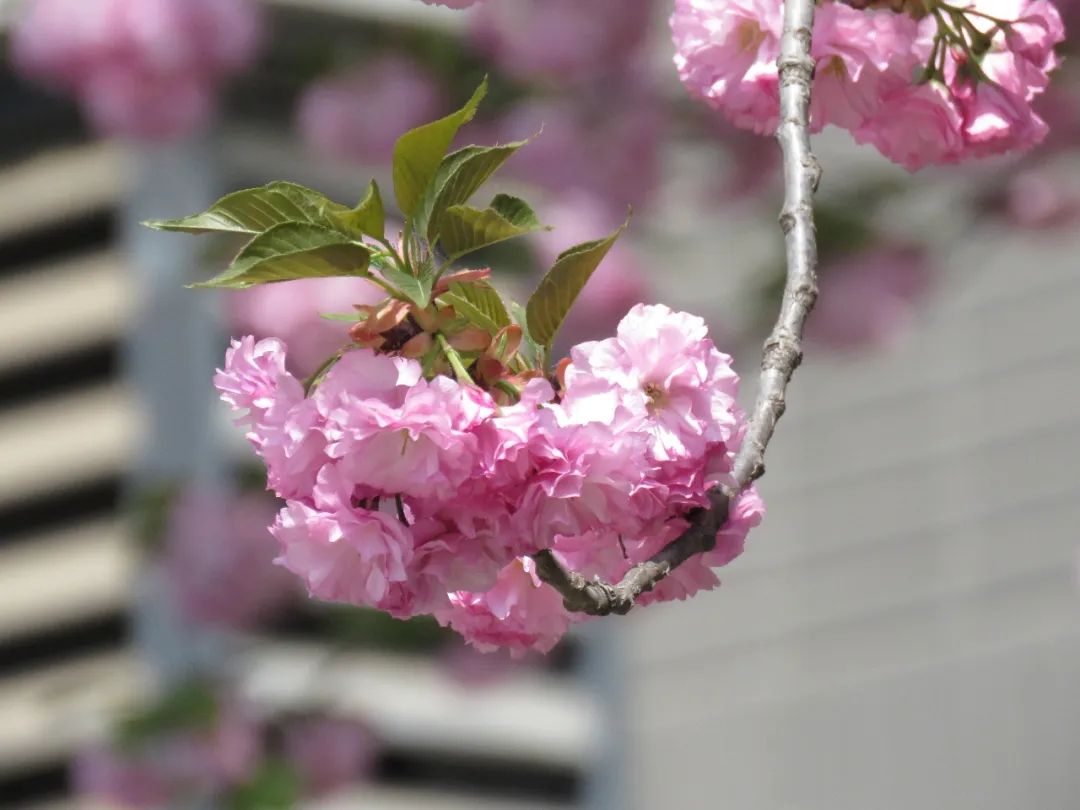
Syringa oblata
Family & Genus: Oleaceae, Syringa
Common Names: White Lilac, Hairy Purple Lilac, North China Purple Lilac
Best Viewing Period: April–May
Best Viewing Location: Jingwu Garden, Chang’an Campus
Description:
Shrub or small tree. The bark is grey-brown or grey. The young branches, flower cluster axis, flower stalks, bracts, flower calyx, both sides of the young leaves, and the petioles are all hairless and densely covered with glandular hairs. The young branches are relatively thick, and sparsely dotted with lenticels. The leaves are leathery or thick papery, ovate to kidney-shaped, with the width generally greater than the length. The inflorescence is an upright panicle, emerging from the side buds, nearly spherical or elongated. The flower stalks are 0.5–3 mm long. The flowers are purple, with a cylindrical corolla tube. The anthers are yellow. The fruit is inverted ovoid, oval to long-elliptical, with the tip tapering and smooth.
Flowering Period: April – May
Fruit Maturation: June – October
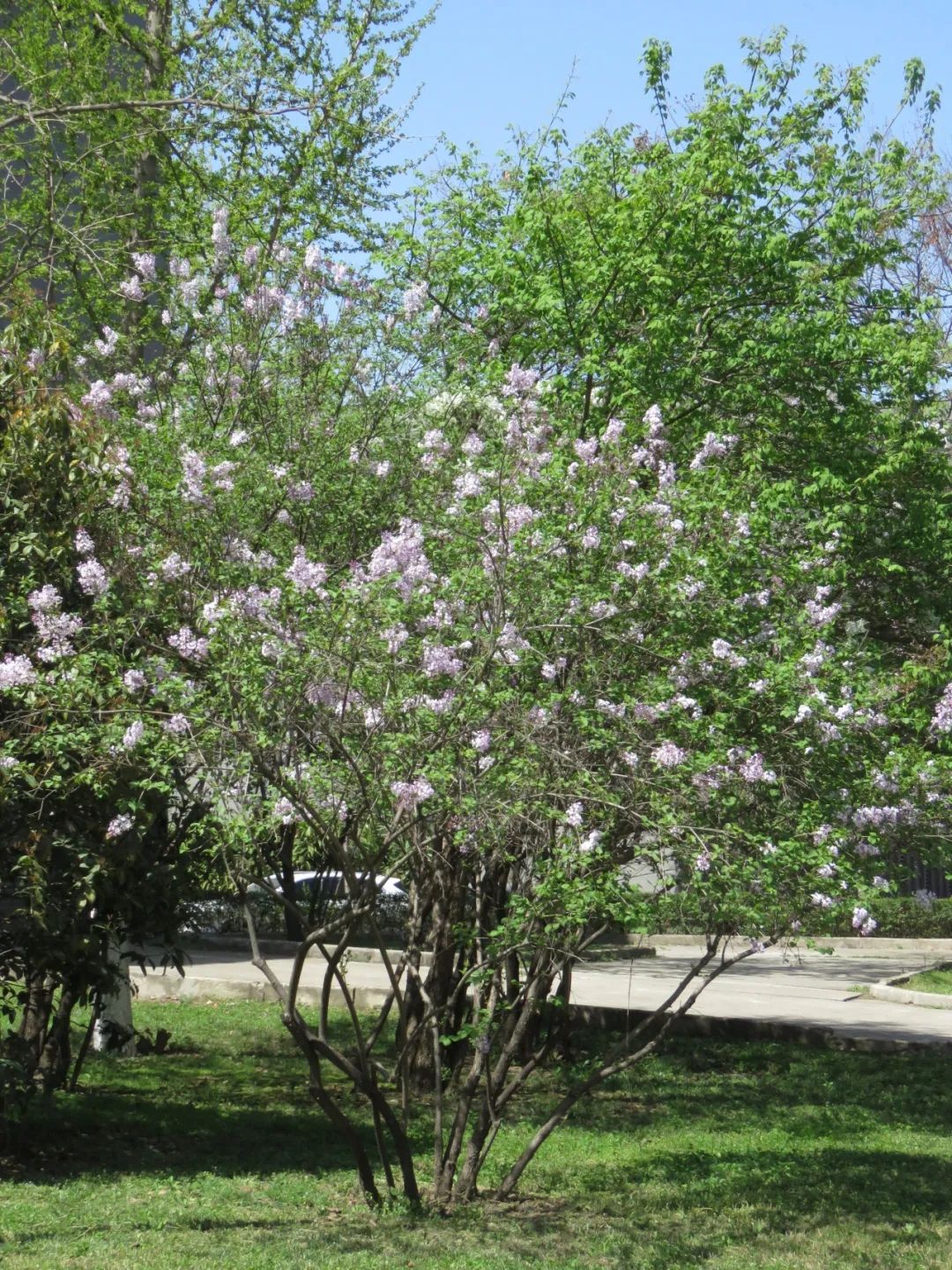
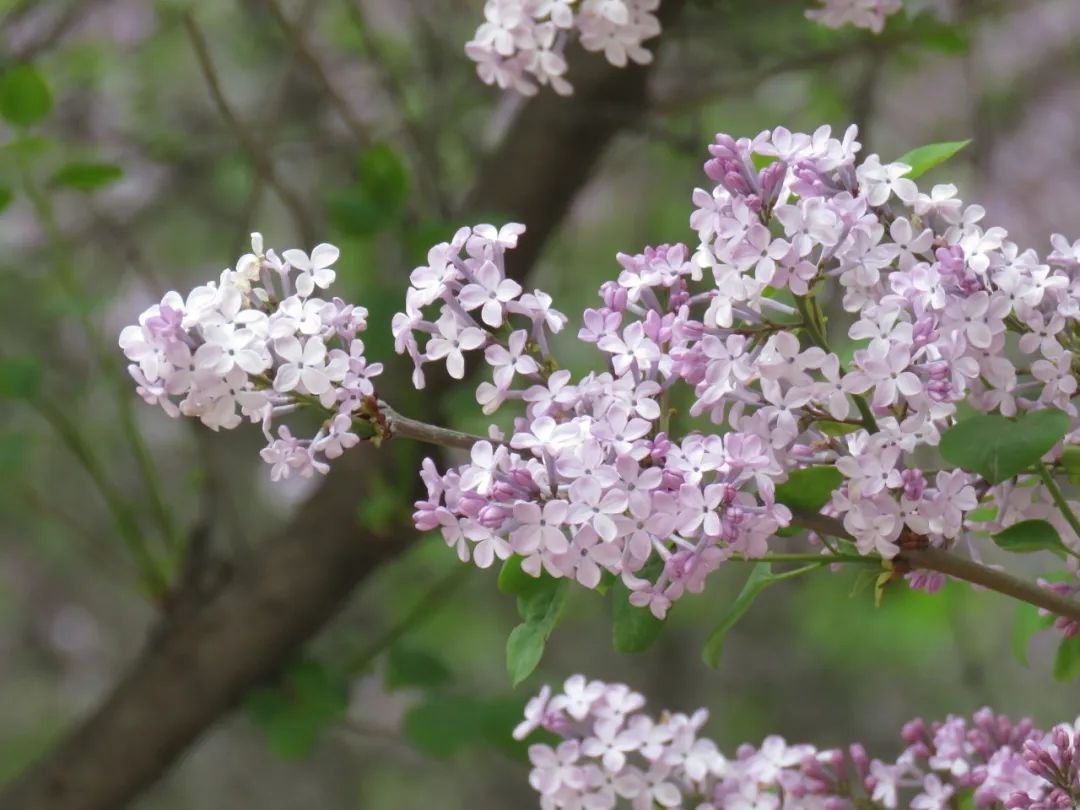
Diospyros kaki
Family & Genus: Ebenaceae, Diospyros
Common Name: Persimmon
Best Viewing Period: October
Best Viewing Location: East, North, and West sides of Chengzi Building, Youyi Campus; Jingwu Garden, Chang’an Campus
Description:
Deciduous large tree. The bark is dark grey to grey-black. The branches are spreading, with scattered, vertically split, long oval or narrow elongated lenticels. The leaves are papery, and the petioles are 8–20 mm long. The flowers are dioecious, though occasionally, a few female flowers appear on male trees and vice versa. The inflorescences are axillary, in cymose clusters. The male flowers are in clusters of 3–5 flowers, usually 3; they are small, 5–10 mm long, with a bell-shaped, yellowish-white corolla that is 4-lobed. The female flowers are solitary in the leaf axils, with green sepals and a pale yellowish-white or yellowish-white corolla with reddish-purple hues. The fruit comes in various shapes, with a diameter ranging from 3.5 to 8.5 cm. The flesh is firm and brittle initially but becomes soft, juicy, and orange-red or bright red when fully ripe. The fruit contains several seeds. The seeds are brown and laterally flattened.
Flowering Period: May – June
Fruit Maturation: September – October
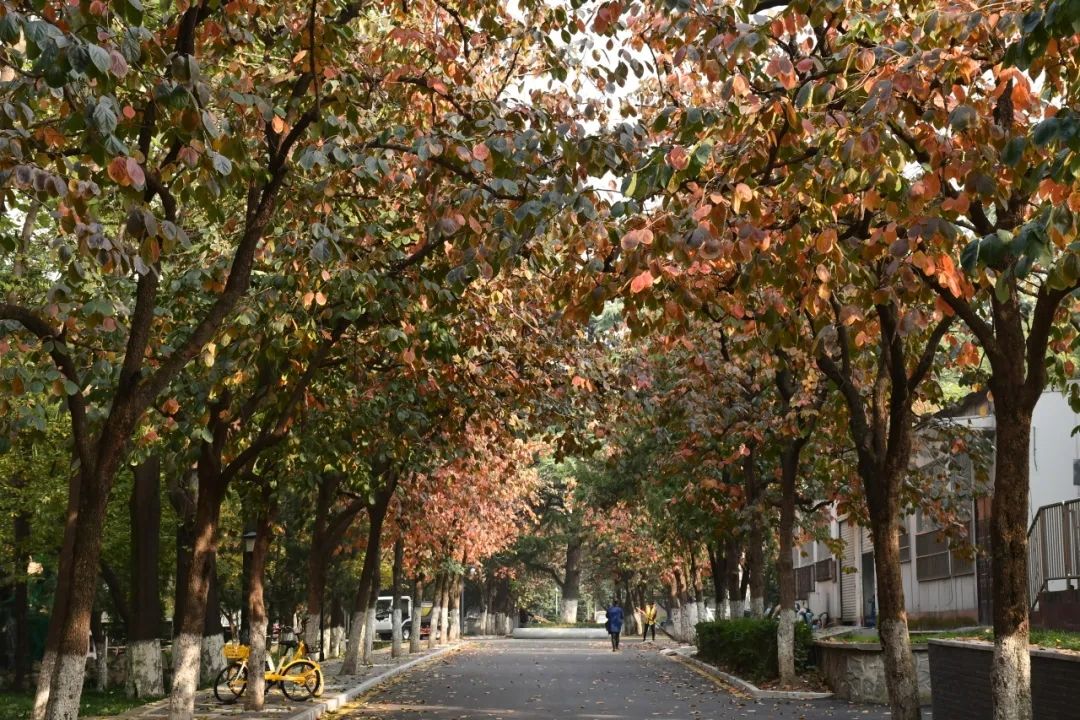
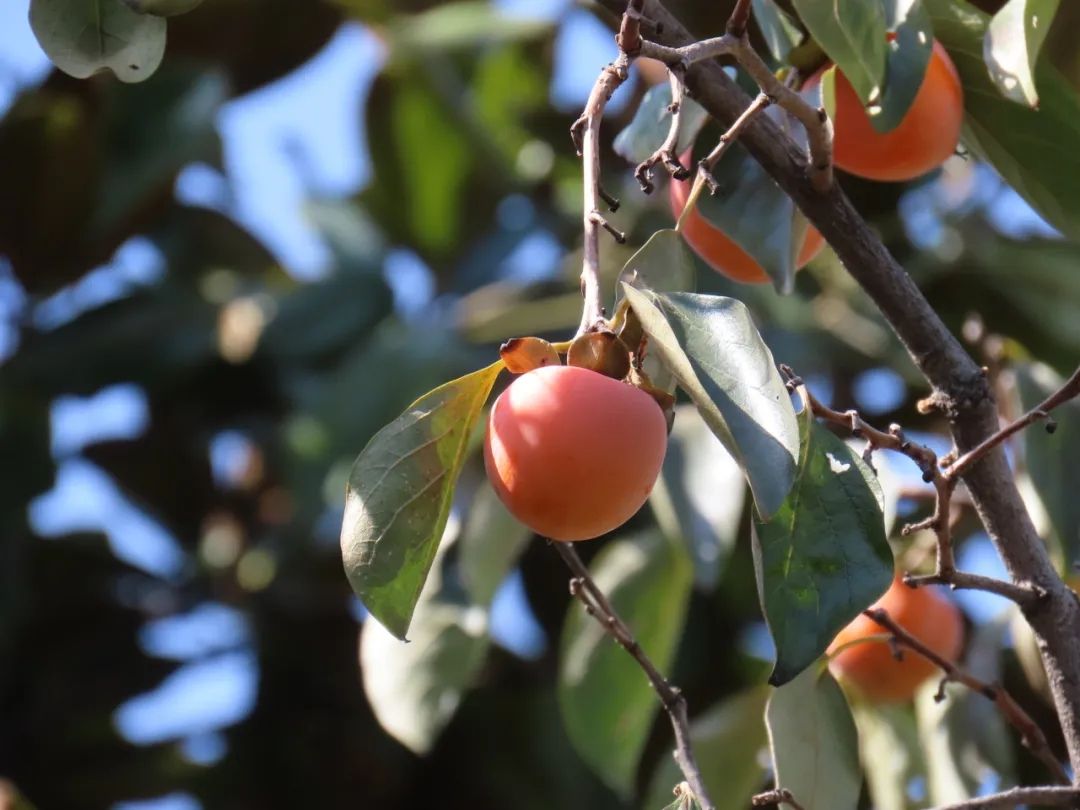
If you’d like to learn more about the plants on the campus of NPU, feel free to explore slowly with the “Campus Plant Appreciation Map”... You can also purchase Campus Flora of NPU: Woody Plants at the NPU Press Tmall flagship store for further study and to keep as a treasured collection!
Source: NPU News
Translator: Mei Leyun
